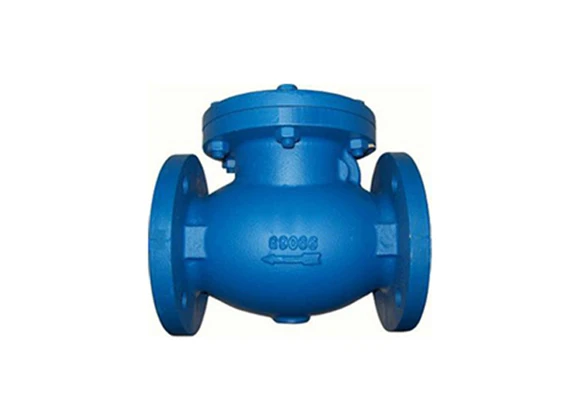Feb . 16, 2025 00:10
Choosing the correct flange type non-return valve is essential for ensuring optimal performance and reliability in various industrial applications. These valves are crucial components used extensively to prevent backflow in piping systems, which can cause significant operational issues and equipment damage. In this guide, we dive into the practical experience, specialized expertise, and authoritative advice needed to understand, select, and trust these critical devices.

Flange type non-return valves, often referred to as check valves, are constructed with flanged ends suitable for bolting to piping systems, providing a tight, leak-free seal. These valves are engineered to allow fluid flow in one direction while automatically preventing reverse flow, protecting pumps, compressors, and other upstream equipment from damage. The durability and reliability of flange type non-return valves make them ideal in rigorous environments such as water treatment facilities, oil and gas pipelines, and chemical processing plants.
Expertise in selecting the appropriate flange type non-return valve revolves around understanding the specifics of your system requirements and the environmental factors that affect valve performance. Flange standards, such as ANSI, DIN, or JIS, vary globally, and it’s crucial to match the valve flange rating with your system to ensure compatibility and safety. Additionally, consider parameters like pressure and temperature conditions, as the valve material and design must withstand these operational stresses. Common materials such as stainless steel, cast iron, and exotic alloys are selected based on their corrosion resistance and mechanical properties to endure system demands.

Authoritative guidance from industry experts emphasizes the importance of valve sealing mechanisms.
Swing check and lift check designs are two prevalent types used in flange type non-return valves. Swing check valves operate with a disc that swings on a hinge, allowing full flow when open and blocking reverse flow when closed. They are well-suited for systems with low to moderate velocity flows. In contrast, lift check valves use a disc that lifts off its seat by upstream pressure to allow flow and is seated by gravity when reverse flow attempts to occur, commonly preferred in high-velocity applications. Each design type provides unique advantages and limitations, often dictated by the system’s flow characteristics and space constraints.
flange type non return valve
Trustworthiness in determining the right supplier and manufacturer for flange type non-return valves is equally important. Reputable manufacturers provide valves that adhere to industry standards and are ISO certified, ensuring robust quality control in their production processes. Trustworthy suppliers offer transparent product documentation, including pressure-temperature ratings, material specifications, and installation and maintenance instructions. Look for manufacturers with a proven track record of delivering reliable products backed by warranty and comprehensive customer support to assist in installation and any troubleshooting.
A vital aspect of maintaining expertise and building trust is regular maintenance checks to ensure operational integrity and to extend the valve's service life. Scheduled inspections for wear and tear, such as gasket seals or disc alignment, prevent potential failures and system downtime. Proactive maintenance preserves the valve function, offering peace of mind and efficient operation.
In conclusion, choosing and maintaining a flange type non-return valve requires a detailed understanding of your system and consultation with experienced professionals. Evaluating factors like material suitability, operational environment, and reputable manufacturing significantly contribute to the successful application of these valves. Combining expert knowledge with authoritative industry practices ensures these valves function reliably, securing your systems against undesired reverse flow and promoting sustained operational efficiency.


 Call us on:
+86-311-86935302
+86-311-86935302
Call us on:
+86-311-86935302
+86-311-86935302
 Email Us:
info@thriveonvalve.com
Email Us:
info@thriveonvalve.com South of Huanmadian Village Town, Ningjin County, Xingtai, Hebei Province, China
South of Huanmadian Village Town, Ningjin County, Xingtai, Hebei Province, China